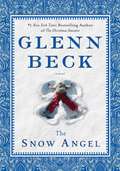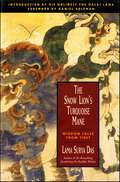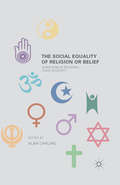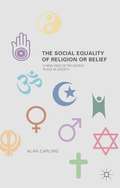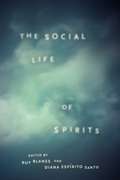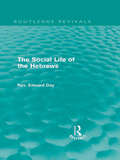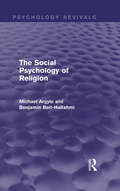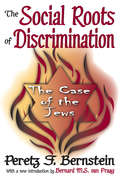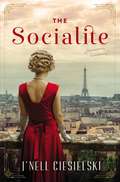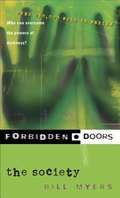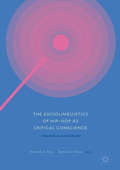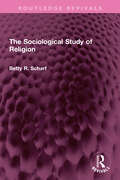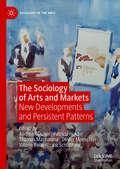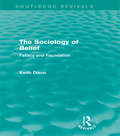- Table View
- List View
The Snow Angel
by Glenn Beck Nicole BaartThe woman in the picture was so young she looked like a child. Her hair was loose, eyes wide, blue T-shirt stark against the pale lines of arching collarbones. I felt the air leave me in a quiet rush. Not because of the way the photo captured her fleeting youth, but because of the way it highlighted the bruise.It was a photo of me.Rachel Price has just one happy memory from her childhood: the moment her father took her hands while playing outside on a cold, snowy day and called her his angel. It was a rare and sacred moment in her young life, one in which she finally felt safe, loved, and protected.But it didn't last long.Years later, Rachel's daughter is the only light in what has become a dark life. Rachel repeats the patterns she learned as a child and exposes her own daughter to those same destructive behaviors. Consumed by an abusive marriage, but secure in the safety of the familiar, she is too afraid to escape.Rachel accepts what her life has become, even as she makes excuses for those who keep her in a constant state of despair and regret. But then, an unexpected phone call from an old friend changes everything. Her ordered world is turned upside down as she's set on a journey that might be her last chance to salvage the life she'd given up on long ago.While new friendships tentatively blossom, Rachel realizes that everything she once believed may be nothing but lies and misunderstandings. But knowing the truth is not as easy as it seems. Sometimes ignorance truly is bliss. As the snow falls and the promise of Christmas redemption nears, Rachel begins to see her entire childhood in a brand-new light and must now decide what her future holds--and what her past really means. Will knowing the truth set her free, or will it condemn her to a life full of regret and "what ifs"?The Snow Angel is a poignant tale about family, forgiveness, and the freedom to live a future free of the past.
The Snow Lion's Turquoise Mane: Wisdom Tales from Tibet
by Surya DasTales of enlightenment that stem from the centuries-old oral Tibetan tradition, collected by one of the foremost American Buddhist teachers and scholars.Introduction by His Holiness the Dalai LamaThis remarkable book brings together more than 150 authentic Buddhist teaching tales from the Hidden Kingdom of Tibet—most never before translated into English. These captivating stories, legends and yarns—passed orally from teacher to student—capture the vibrant wisdom of an ancient and still-living oral tradition. Magical, whimsical, witty and ribald, The Snow Lion’s Turquoise Mane unfolds a luminous vision of a universe where basic goodness, harmony, and hope prevail.“This collection of more than 150 stories is the only such large anthology in the field of either Tibetan Buddhism or Himalayan folk and fairy tales, and provides unique reading material for both adults and children.” —Mu Soeng Sunim, Tricycle: The Buddhist Review“These wonderful stories of wandering yogis and yak herders echo with uncommon sense and deep wisdom.” —Rick Fields, author of How the Swans Came to the Lake
The Social Church: A Theology of Digital Communication
by Justin WiseDid you know you can read online reviews of your church? How often have you talked about &“reaching people where they are&”—and realized that much of the time, they are on the Internet? We&’ve been living in a digital world for quite a while now. Justin Wise speaks about social media as this generation's printing press—a revolutionary technology that can spread the gospel farther and faster than we can imagine. It&’s time to take what we know (and admit what we don&’t know) and learn together how to move forward as the church. Are you ready to think theologically about this digital age and reach people in a new way?
The Social Church: A Theology of Digital Communication
by Justin WiseDid you know you can read online reviews of your church? How often have you talked about &“reaching people where they are&”—and realized that much of the time, they are on the Internet? We&’ve been living in a digital world for quite a while now. Justin Wise speaks about social media as this generation's printing press—a revolutionary technology that can spread the gospel farther and faster than we can imagine. It&’s time to take what we know (and admit what we don&’t know) and learn together how to move forward as the church. Are you ready to think theologically about this digital age and reach people in a new way?
The Social Equality of Religion or Belief: A New View Of Religion's Place In Society
by Alan CarlingSome countries, like the UK, give special recognition by the state to one or a few religions; other countries, like France and the US, give recognition to none. This book is about a new approach that gives equal recognition to all religions and non-religious belief systems.
The Social Equality of Religion or Belief: A New View of Religion's Place in Society
by Alan CarlingThe Social Equality of Religion or Belief.
The Social Ethos of Corinthian Correspondence: Interests and Ideology from 1 Corinthians to 1 Clement
by David G. HorrellAn exemplary study, focussing on the Corinthian correspondence, of the social ethos of early Christian teaching and its development.
The Social Gospel in American Religion: A History
by Christopher H EvansA new and much-needed history of one of America&’s most important religious movements . . . from before the Civil War to after Civil Rights to Barack Obama.&” —Barry Hankins, Professor of History, Baylor University The global crises of child labor, alcoholism and poverty were all brought to our attention through the social gospel movement. Its impact on American society makes it one of the most influential developments in American religious history. Christopher H. Evans traces the development of the social gospel in American Protestantism, and illustrates how the religious idealism of the movement also rose up within Judaism and Catholicism. Contrary to the works of previous historians, Evans demonstrates how the presence of the social gospel continued in American culture long after its alleged demise following World War I. Evans reveals the many aspects of the social gospel and their influence on a range of social movements during the twentieth century, culminating with the civil rights movement in the 1950s and 1960s. It also explores the relationship between the liberal social gospel of the early twentieth century and later iterations of social reform in late twentieth century evangelicalism.The Social Gospel in American Religion considers an impressive array of historical figures including Washington Gladden, Emil Hirsch, Frances Willard, Reverdy Ransom, Walter Rauschenbusch, Stephen Wise, John Ryan, Harry Emerson Fosdick, A. J. Muste, Georgia Harkness, and Benjamin Mays. It demonstrates how these figures contributed to the shape of the social gospel in America, while arguing that the movement&’s legacy lies in its profound influence on broader traditions of liberal-progressive political reform in American history.
The Social Life of Hagiography in the Merovingian Kingdom
by Jamie KreinerThis book charts the influence of Christian ideas about social responsibility on the legal, fiscal and operational policies of the Merovingian government, which consistently depended upon the collaboration of kings and elites to succeed, and it shows how a set of stories transformed the political playing field in early medieval Gaul. Contemporary thinkers encouraged this development by writing political arguments in the form of hagiography, more to redefine the rules and resources of elite culture than to promote saints' cults. Jamie Kreiner explores how hagiographers were able to do this effectively, by layering their arguments with different rhetorical and cognitive strategies while keeping the surface narratives entertaining. The result was a subtle and captivating literature that gives us new ways of thinking about how ideas and institutions can change, and how the vibrancy of Merovingian culture inspired subsequent Carolingian developments.
The Social Life of Spirits
by Ruy Blanes Diana Espírito SantoSpirits can be haunters, informants, possessors, and transformers of the living, but more than anything anthropologists have understood them as representations of something else--symbols that articulate facets of human experience in much the same way works of art do. The Social Life of Spirits challenges this notion. By stripping symbolism from the way we think about the spirit world, the contributors of this book uncover a livelier, more diverse environment of entities--with their own histories, motivations, and social interactions--providing a new understanding of spirits not as symbols, but as agents. The contributors tour the spiritual globe--the globe of nonthings--in essays on topics ranging from the Holy Ghost in southern Africa to spirits of the "people of the streets" in Rio de Janeiro to dragons and magic in Britain. Avoiding a reliance on religion and belief systems to explain the significance of spirits, they reimagine spirits in a rich network of social trajectories, ultimately arguing for a new ontological ground upon which to examine the intangible world and its interactions with the tangible one.
The Social Life of Spirits
by Ruy Blanes Diana Espírito SantoSpirits can be haunters, informants, possessors, and transformers of the living, but more than anything anthropologists have understood them as representations of something else—symbols that articulate facets of human experience in much the same way works of art do. The Social Life of Spirits challenges this notion. By stripping symbolism from the way we think about the spirit world, the contributors of this book uncover a livelier, more diverse environment of entities—with their own histories, motivations, and social interactions—providing a new understanding of spirits not as symbols, but as agents. The contributors tour the spiritual globe—the globe of nonthings—in essays on topics ranging from the Holy Ghost in southern Africa to spirits of the “people of the streets” in Rio de Janeiro to dragons and magic in Britain. Avoiding a reliance on religion and belief systems to explain the significance of spirits, they reimagine spirits in a rich network of social trajectories, ultimately arguing for a new ontological ground upon which to examine the intangible world and its interactions with the tangible one.
The Social Life of the Hebrews (Routledge Revivals)
by Edward DayFirst published in 1901, this study of the social life of the Hebrews considers both the time of the judges and the time of the monarchy. Written in a popularly scientific style, designed to appeal to students of ancient Middle East and biblical history as well as the general reader, this work details the social life and history of allied Semitic races, covering the period of time from the settlement of Canaan to the breakup of the Northern Kingdom in 722 BC.
The Social Psychology of Religion (Psychology Revivals #Volume 11)
by Michael Argyle Benjamin Beit-HallahmiOriginally published in 1975, this book is a completely rewritten, revised version of Michael Argyle’s standard work, Religious Behaviour, first published in 1958. A great deal of new research had appeared since that date, which threw new light on the nature and origins of religious behaviour, beliefs and experience. Trends in religious activity in Britain and the United States since 1900, and the state of religion in these two countries at the time, are examined. Evidence is presented on the origins of religious activity – including the effects of stress, drugs, meditation, evangelistic meetings, personality variables, and social class. Other studies examine the effects of religion, for example on mental and physical health, political attitudes, racial prejudice, sexual behaviour, morals, and the relation between religion and scientific and other achievements. The findings are used to test the main theories about religion which have been put forward by psychologists and other social scientists, such as Freud’s father-projection theory, cognitive need theories, and deprivation-compensation theories.
The Social Roots of Discrimination: The Case of the Jews
by John W. ThibautThe Social Roots of Discrimination explains the phenomenon of anti-Semitism. In this classic volume, Peretz F. Bernstein looks for objective reasons why anti-Semitism flourished in European countries. Some civilized people would consider the notion of race uncivilized, but the existence of different races and the inequality of races with their specific race characteristics and on top of that the existence of superior and inferior human races was accepted as a fact of life and as a scientific truth long before the Nazis came to power. Although there is a marked difference in dealing with anti-Semitism in continental Europe in 1920 and the anti-Semitism in, for instance, the US in 2000, Berstein's ideas remain valuable.Starting from a concrete problem, anti-Semitism in Central Europe, Bernstein puts anti-Semitism in a general sociological theoretical framework. Far from limiting himself to fruitless elaborations on the common perceived unpleasant characteristics of Jews, he recognizes that the group is heterogeneous and that the usual arguments to justify anti-Semitism do not have any general validity, although they may hold for some specific individuals of the hated group, like individual members of any group may be less pleasant. Bernstein's ideas remain valuable.Bernstein tries to explain the hatred of Jews as the working of a more general mechanism--one that has nothing to do specifically with of Jews as a collective or as individuals. In doing so Bernstein attempts to sketch a general theory of social groups and conflicts between groups. The Social Roots of Discrimination gives an important message both for social scientists and for all intellectuals who are concerned with the strifes between nations, races, and social groups.
The Social Science of Sport: A Critical Analysis (Sport in the Global Society – Contemporary Perspectives)
by Bo Carlsson and Susanna HedenborgIn this book questions about definitions and demarcations of sport science are discussed. Not the least the many normative ideas of sport as good or as bad are problematized in relation to the academic field. These ideas permeate sport science in ways that are not seen in other academic fields like history, sociology or law. In addition, if and if so, in what ways sport science influence social science in general. Does sport science bring new questions in relation to issues like "what makes a society possible" or "what is a human being"?This book was published as a special issue of Sport in Society.
The Social Scientific Study of Exorcism in Christianity (Popular Culture, Religion and Society. A Social-Scientific Approach #3)
by Giuseppe Giordan Adam PossamaiThis book presents an academic analysis of exorcism in Christianity. It not only explores the crisis and drama of a single individual in a fight against demonic possession but also looks at the broader implications for the society in which the possessed lives. In recognition of this, coverage includes case studies from various geographical areas in Europe, North and South America, and Oceania. The contributors explore the growing significance of the rite of exorcism, both in its more structured format within traditional Christian religions as well as in the less controlled and structured forms in the rites of deliverance within Neopentecostal movements. They examine theories on the interaction between religion, magic, and science to present new and groundbreaking data on exorcism. The fight against demonic possession underlines the way in which changes within the religious field, such as the rediscovery of typical practices of popular religiosity, challenge the expectations of the theory of secularization. This book argues that if possession is a threat to the individual and to the equilibrium of the social order, the ritual of exorcism is able to re-establish a balance and an order through the power of the exorcist. This does not happen in a social vacuum but in a consumer culture where religious groups market themselves against other faiths. This book appeals to researchers in the field.
The Social Significance of Religion in the Enlarged Europe: Secularization, Individualization and Pluralization
by Olaf MüllerEngaging with some of the central issues in the sociology of religion, this volume investigates the role and significance of churches and religion in contemporary Western and Eastern Europe. Based on an extensive international research project, it offers case studies of various countries (including Finland, Ireland, Portugal, Germany, Poland, Russia, Estonia, Hungary and Croatia), as well as cross-country comparisons. Researching more precisely the present social relevance of church and religion at different levels, The Social Significance of Religion in the Enlarged Europe raises and responds to both descriptive and explanatory questions: Can we observe tendencies of religious decline in the various Western and Eastern European countries? Are we witnessing trends of religious individualization? To what extent has there been a religious upswing in the last few years? And what are the factors causing the observed processes of religious change? Marked by its broad range of data and a coherent conceptual framework, in accordance with which each chapter assesses the extent to which three important theoretical approaches in the sociology of religion - secularization theory, the market model of religion, and the individualization thesis - are applicable to the data, this book will be of interest to scholars of sociology, politics and religion exploring religious trends and attitudes in contemporary Europe.
The Social World of Intellectuals in the Roman Empire
by Kendra Eshleman"This book examines the role of social networks in the formation of identity among sophists, philosophers, and Christians in the early Roman Empire. Membership in each category was established and evaluated socially as well as discursively. From clashes over admission to classrooms and communion to construction of the group's history, integration into the social fabric of the community served as both an index of identity and a medium through which contests over status and authority were conducted. The juxtaposition of patterns of belonging in Second Sophistic and early Christian circles reveals a shared repertoire of technologies of self-definition, authorization, and institutionalization, and shows how each group manipulated and adapted those strategies to its own needs. This approach provides a more rounded view of the Second Sophistic and places the early Christian formation of "orthodoxy" in a fresh context"--
The Socialism of Fools?
by William I. BrusteinAnti-Semitism, as it has existed historically in Europe, is generally thought of as having been a phenomenon of the political right. To the extent that nineteenth- and early twentieth-century leftist movements have been found to manifest anti-Semitism, their involvement has often been suggested to be a mere fleeting and insignificant phenomenon. As such, this study seeks to examine more fully the role that the historic European left has played in developing and espousing anti-Semitic views. The authors draw upon a range of primary and secondary sources, including the analysis of left- and right-wing newspaper reportage, to trace the relationship between the political left and anti-Semitism in France, Germany, and Great Britain from the French Revolution to World War II, ultimately concluding that the relationship between the left and anti-Semitism has been much more profound than previously believed.
The Socialite
by J'Nell CiesielskiGlamour, treachery, and espionage collide when an English socialite rushes to save her sister from the Nazis. As the daughter of Sir Alfred Whitford, Kat has a certain set of responsibilities. But chasing her wayward sister, Ellie, to Nazi-occupied Paris was never supposed to be one of them. Now accustomed to the luxurious lifestyle that her Nazi boyfriend provides, Ellie has no intention of going back to the shackled life their parents dictate for them—but Kat will stop at nothing to bring her sister home. Arrested for simply trying to defend himself against a drunken bully, Barrett Anderson is given the option of going to jail or serving out his sentence by training Resistance fighters in Paris. A bar owner serves as the perfect disguise to entertain Nazis at night while training fighters right below their jackboots during the day. Being assigned to watch over two English debutantes is the last thing he needs, but a payout from their father is too tempting to resist. Can Barrett and Kat trust each other long enough to survive, or will their hearts prove more traitorous than the dangers waiting around the corner?
The Society (Forbidden Doors, #1)
by Bill MyersOuija boards, amulets, charm pouches ... just kid's stuff, right? At least, that's what Rebecca and Scott think when they first move to Crescent Bay. Then they run into the Society-a select group of students who practice occultic rituals using these objects ... a group that decides Becka and Scott are a threat to them and their powers. Soon the brother and sister discover the hidden power behind the "games"-and the dangerous consequences for those standing in its way. Not until the final showdown, when their faith is put to the ultimate test, do Scott and Rebecca realize the awesome power and victory of God over darkness. Recommended for ages 12 and up.
The Sociolinguistics of Hip-hop as Critical Conscience: Dissatisfaction and Dissent
by Damian J. Rivers Andrew S. RossThis book adopts a sociolinguistic perspective to trace the origins and enduring significance of hip-hop as a global tool of resistance to oppression. The contributors, who represent a range of international perspectives, analyse how hip-hop is employed to express dissatisfaction and dissent relating to such issues as immigration, racism, stereotypes and post-colonialism. Utilising a range of methodological approaches, they shed light on diverse hip-hop cultures and practices around the world, highlighting issues of relevance in the different countries from which their research originates. Together, the authors expand on current global understandings of hip-hop, language and culture, and underline its immense power as a form of popular culture through which the disenfranchised and oppressed can gain and maintain a voice. This thought-provoking edited collection is a must-read for scholars and students of linguistics, race studies and political activism, and for anyone with an interest in hip-hop.
The Sociological Study of Religion (Routledge Revivals)
by Betty R. ScharfFirst published in 1970, The Sociological Study of Religion distinguishes the sociological from the philosophical or theological approach to religion. It reviews the major theories relating to religious practice to social structure and analyzes the social functions of religion. The contributions of Durkheim, Marx, Freud, Troeltsch and Weber are examined from this point of view, also the contribution of social anthropology, and the studies of religion in industrial societies. This book is a must read for students of sociology and religion.
The Sociology of Arts and Markets: New Developments and Persistent Patterns (Sociology of the Arts)
by Thomas Mazzurana Olivier Moeschler Andrea Glauser Patricia Holder Valérie Rolle Franz SchultheisThis edited collection offers an in-depth analysis of the complex and changing relationship between the arts and their markets. Highly relevant to almost any sociological exploration of the arts, this interaction has long been approached and studied. However, rapid and far-reaching economic changes have recently occurred. Through a number of new empirical case studies across multiple artistic, historic and geographical settings, this volume illuminates the developments of various art markets, and their sociological analyses. The contributions include chapters on artistic recognition and exclusion, integration and self-representation in the art market, sociocultural changes, the role of the gallery owner, and collectives, rankings, and constraints across the cultural industries. Drawing on research from Japan, Switzerland, France, Italy, China, the US, UK, and more, this rich and global perspective challenges current debates surrounding art and markets, and will be an important reference point for scholars and students across the sociology of arts, cultural sociology and culture economy.
The Sociology of Belief: Fallacy and Foundation (Routledge Revivals)
by Keith DixonFirst published in 1980, this book presents a study of knowledge and the patterns of social and scientific thought. Keith Dixon argues that traditional and contemporary formulations of the sociology of knowledge involve a series of fallacies, and the claim to reduce knowledge to ideology devalues the role of reasoned inquiry. Chapters discuss such areas as the theories of Marx and Mannheim, the sociology of science and of religious belief. With a detailed conclusion analysing the foundations and limits of the sociology of knowledge, this reissue will provide an interesting and useful analysis for students of Sociology.
